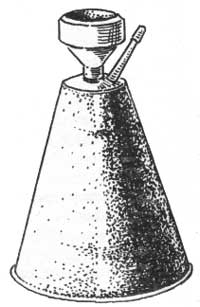

|
DEFINITE knowledge concerning deserts - their geography, climatology and biology - is as yet very meager. Compared with the information which has been accumulated about marine processes and also that pertaining to humid, continental areas, the data available on desert conditions are strikingly scanty. Yet, as pointed out by Dr. Forrest Shreve1 in his illuminating article on "The Problems of the Desert", the extreme conditions of geography and climate, and the resulting unusual adaptations of the biological world, should offer exceptional opportunities for learning many of the secrets of the processes involved in the various fields of natural history. Those more regular and uniform factors which influence other areas undoubtedly offer more equable conditions under which to make certain investigations, yet the very irregularity of the desert at once gives it definite advantages.
In the lower part of Grand Canyon are represented true desert conditions. Above is an imperceptible gradation into those of a semi-arid type. As a whole, therefore, the canyon is characterized by the irregularity of natural processes, which is typical of arid regions. Scientific investigations of the processes in Grand Canyon has involved several fields, but has been largely of a taxonomic nature. Although actually the various fields are intimately related, sufficient work has not been done in most cases to furnish a full understanding of the relationships. Especially is there a lack of information concerning climatology, so the futility of attempting to fully interpret processes involving any of the other fields is obvious. Daily temperature and precipitation records have been kept at one place only on both the north and south rims of Grand Canyon within recent years. This winter attempts have also been made to obtain daily temperature records from the Canyon bottom and from an additional locality on the South Rim. These data represent all that are available at the present time, and their inadequacy for giving a proper interpretation of natural features is apparent when one considers the many conditions which are obviously represented in an area involving over a thousand square miles and more than a vertical mile in altitude extremes. 
In order to partially compensate for the present lack of meterological data at Grand Canyon, the staff of the division of research and education has recently installed a group of long period rain gauges, such as have been in use in the desert areas of southern Arizona for the past five years. These gauges, developed at the Desert Laboratory of the Carnegie Institution at Tucson, consist of truncated conical vessels about 9-1/2 inches in height and the same in diameter at the base. They are made of sheet copper because of its durability, and have well soldered seams. The vessels are surmounted by vertical-sided but conical-bottomed measuring bowls, each three inches in diameter and fastened to the upper end of a connecting tube which passes into the body of the container. A detailed description of the long period rain gauge and of results obtained from its use has been published by Dr. Godfrey Sykes.2 He states concerning it that the conical form was adopted because it makes the instrument less easily dug up by animals, that the short stem is to raise the measuring bowl a few inches above the ground surface when the instrument is buried, and that the small spout is to facilitate emptying and measuring the contents. A hundred cubic centimeters of light mineral oil have been found sufficient to protect the surface of contained water from evaporation for at least a year, even under extreme desert conditions, and the container will hold the equivalent of 40 inches of rainfall which is far more than obtained annually in any part of Grand Canyon.
Since in a desert region annual rainfall means but little, and seasonal rainfall, or that of concentration periods, is the vital and controlling factor, these gauges serve their purpose admirably. At Grand Canyon six gauges were installed on the first of May, and it is planned to read these every three months. They will then record precipitation for the winter snow season, the spring and early summer dry season, the summer rainy season and the fall dry season. These gauges have been placed at various altitudes, on the rims and within the canyon, as indicated below, so should do much to increase our actual knowledge of this important influence on the natural history of Grand Canyon.
| ||||||||||||||||||
| <<< Previous | > Cover < |
vol9-3f.htm
14-Oct-2011